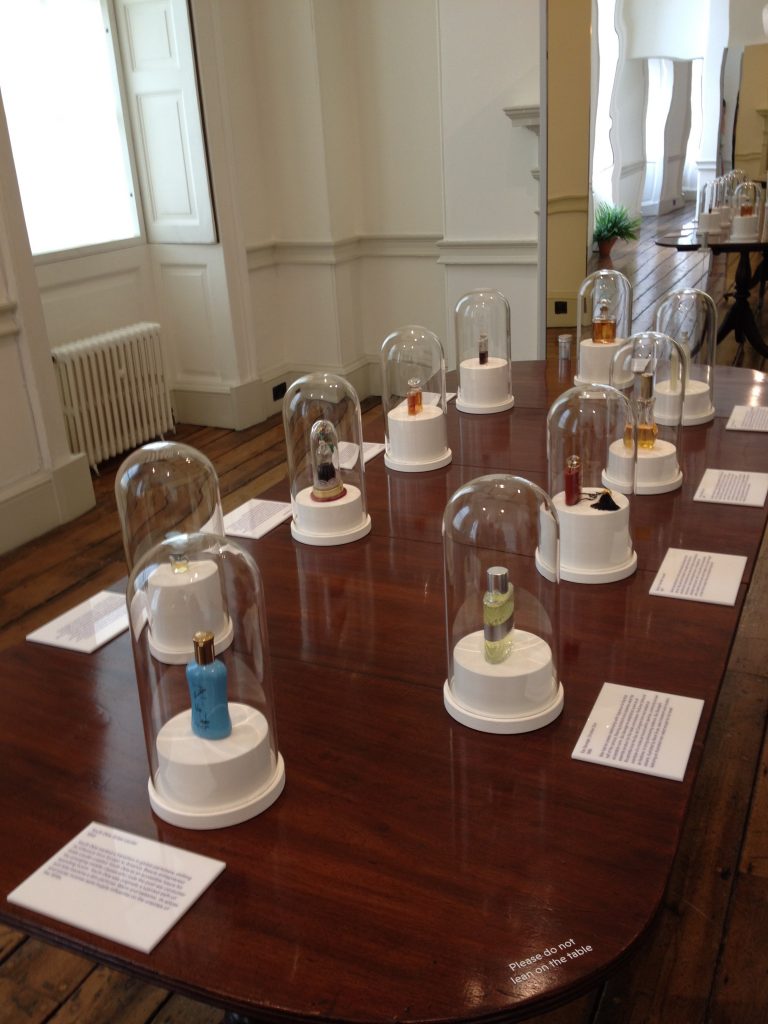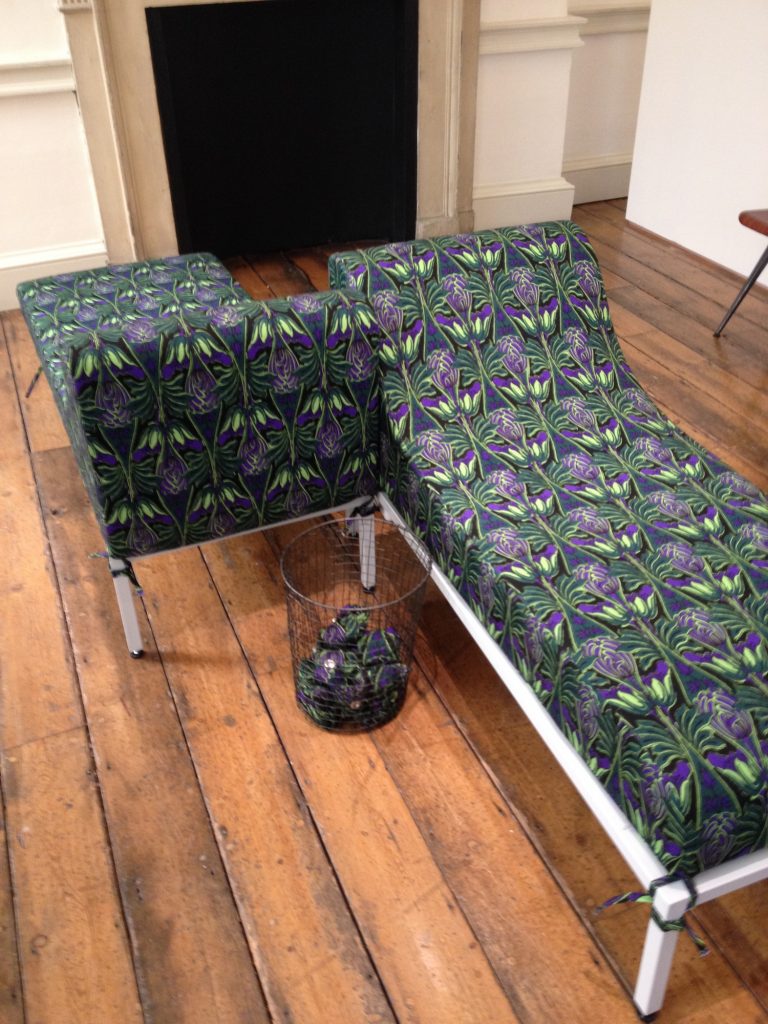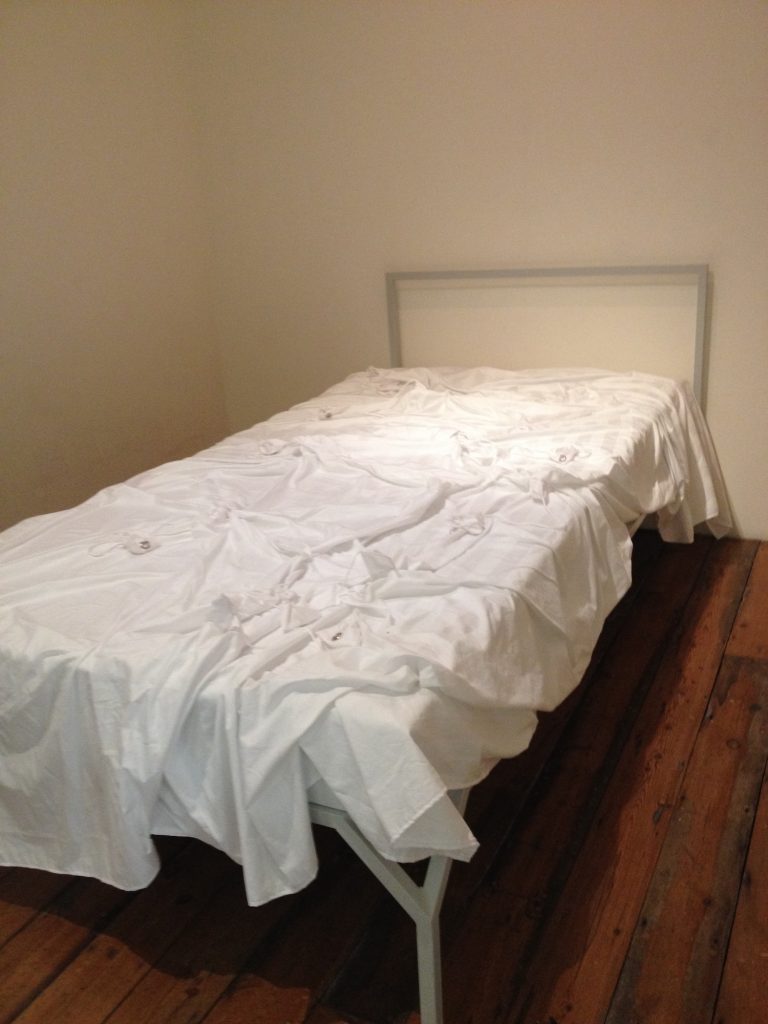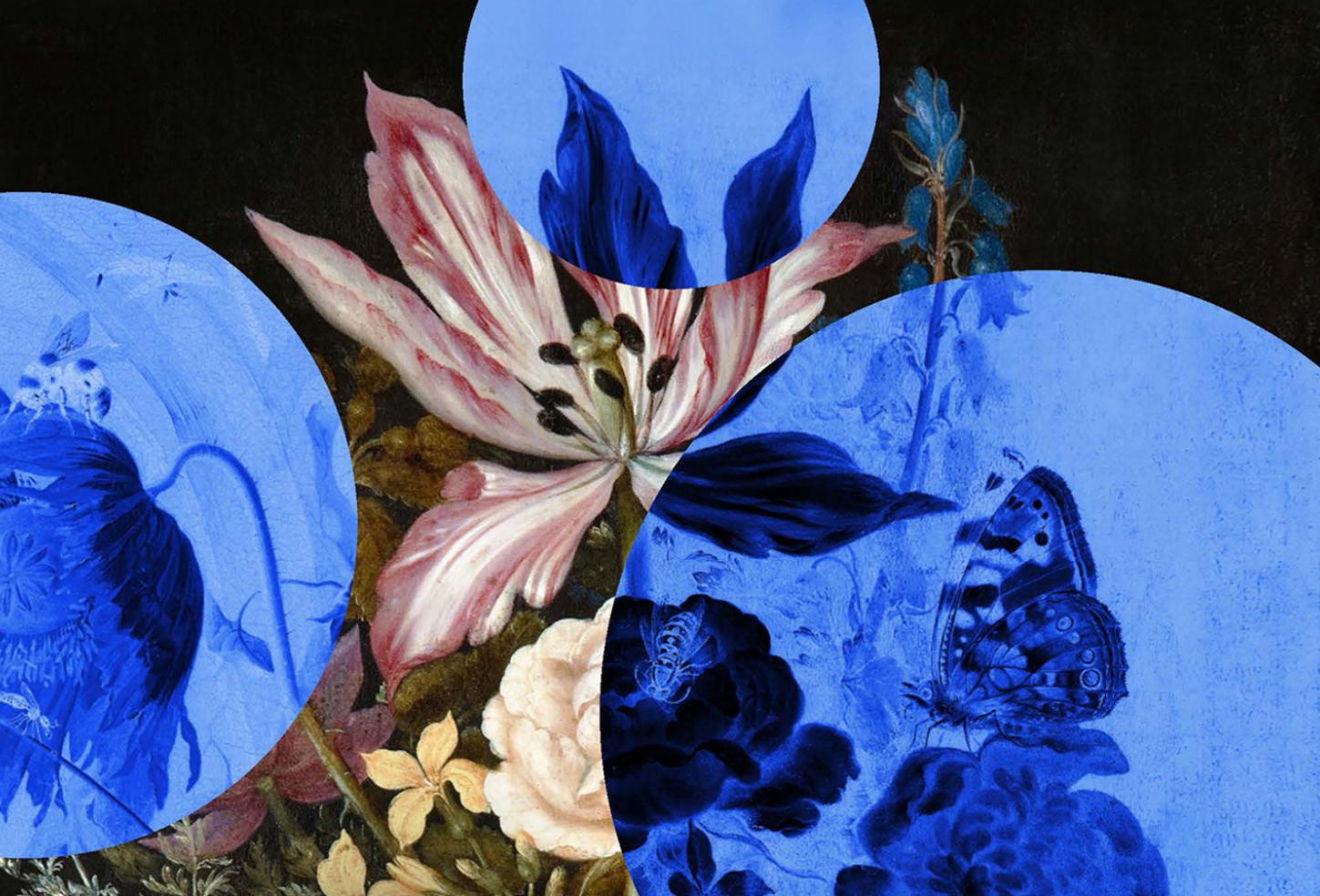Cette publication est également disponible en :
Français
If this summer the sides of the river Thames appeal to you, don’t miss out on the new multisensory exhibition on view at Somerset House : “Perfume: A sensory journey through contemporary scent”. Until September 17th, you will be able to discover there the specificities of contemporary perfumery through several senses.
According to Claire Catterall, senior curator at Somerset House and initiator of this project, “perfume is the art of the 21st century”. Her idea for this exhibition ? Offering an olfactory journey through space, time and the emotions created by scents. “If books and movies can make us travel in that way, why couldn’t perfumes do the same ?” she asks as an introduction. Co-curator Lizzie Ostrom, aka Odette Toilette, author of Perfume: A Century of Scents (2015), sees this exhibition as a way to challenge our preconceptions and enlighten the current changes in perfumery: from the original and bold choices of raw materials (of which a list opens the exhibition, mixing indiscriminately oris, creosote, chlorine or blood) to the innovative creative intentions of perfumers, who nowadays come not only from specialized schools but are also sometimes completely self-taught.
The introductory rooms presents a few masterpieces from modern perfumery, not necessarily the most famous but amongst the most representative and iconic perfumes of each decade of the 20th century. On a large wooden table, the ten perfume bottles are displayed under elegant glass domes. Two small, rather low-tech, aluminum jars, allow visitors to smell perfumes from both the beginning and the end of the century : L’Origan by Coty (1905), recomposed by Daphné Bugey, and CK One (1994) by Calvin Klein, a confrontation clearly emphasizing the gap between those two creations. In between are showcased Chypre by Coty, N°5 by Chanel, Schocking by Schiaparelli, Vent Vert by Balmain, Youth Dew by Estée Lauder, Eau Sauvage by Dior, Opium by Yves Saint-Laurent, et Giorgio by Giorgio Beverly Hills.

While leaving this historical room, visitors are invited to grab a note-card and a pen before further entering the exhibition. The idea is to allow everyone to write their personal impressions about the ten contemporary fragrances displayed in the exhibition without any textual content. Indeed, scents are simply incorporated into immersive installations reflecting their inspirations, evocations or forms, without visitors knowing what they are smelling. The installations are more or less abstract, with visual elements such as shapes, colors, lights, but are also involving textures, movements and sound: a box of black gravel, a white cube under white light, tree trunk benches, a dark confessional, etc. One thing they all share is the perfumers’ voice, as a way to embody their presence. Visitors are therefore invited to interact with each environment, to sit, lay, reach for or grab the smelling elements. “The smelling experience is intimate. Ideally we would smell everything on skin, but as we can’t, we have tried to reproduce this intimacy with objects you can grab, which implies a one-on-one relationship” explains Lizzie Ostrom.

After smelling five perfumes, a room offers the possibility to smell them again in the aluminum jars while learning their name, creator, brand and main materials (natural as well as synthetic, accords by accords). Not to spoil the experience, as visitors are not supposed to know which perfume goes with which display, here follows a randomly ordered list of the fragrances showcased:
• Purple Rain (2015), by Daniela Andrier for Prada
• Sécrétions magnifiques (2007), by Antoine Lie for Etat Libre d’Orange
• Comme des garçons 2 (1999), by Mark Buxton for Comme des Garçons
• Avignon (2002), by Bertrand Duchaufour for Comme des Garçons
• En passant (2000), d’Olivia Giacobetti pour Editions de Parfums Frédéric Malle
• Charcoal (2016), by Lyn Harris for Perfumer H
• El cosmico (2015), by David Seth Moltz for D.S. & Durga
• Molecule 01 (2007), by Geza Schoen for Escentric Molecules
• L’air du désert marocain (2005), by Andy Tauer for Tauer Perfumes
• Dark Ride (2015), by Killian Wells for Xyrena

The last room, sponsored by Givaudan, is a functioning perfume laboratory. All through the exhibition, trainee perfumers from Givaudan’s school will create and weight formulas before the public, allowing visitors to discuss their work and to smell ingredients and accords.
The ten selected scents are supposedly pioneers and representative of the renewal of 21st century perfumery. “We had to find interesting and original scents, explains Lizzie Ostrom. Some were selected because they question what we think is wearable or desirable in a perfume, some because they illustrate the creative approach, the signature or the style of a perfumer, and some were included because they show what perfume can be today, and where its limits are.”
The selection, as well as the intent, differs significantly from Chandler Burr’s “The Art of Scent 1889-2012”, held at the New York Museum of Arts and Design in 2013. The purpose is not to present scents as pure works of art by putting them in a white cube-like exhibition space, neither is it to transpose on them a terminology from the field of art history and critical discourse. On the contrary, Lizzie Ostrom wants to question the ambivalent status of scent, in between products and art, by stripping it off its commercial attributes (name, bottle, brand) and introducing it into the museum context in a new and original way. “I am not really saying that perfume is an art but it is the equivalent, it’s at the same level” explicits Claire Catterall. Essentially, this exhibition intends to enable an understanding of perfume in all its dimensions by engaging visual, auditive and haptic aspects. “We hope we have done something that is open enough not to force visitors to embrace our point of view. It’s a balance really, between not saying too much and not saying too little”, comments Ostrom.
But if the exhibition does gets scent out of its commercial context, the setting of the installations gives it an other context, maybe more hazardous. Designed without any participation from the perfumers, each installation only reflects one interpretation of a perfume, inevitably putting a bias on visitors’ subjectivity. The result, though playful and imaginative, may not be completely relevant, for installations are not suitable to explicit the specificity of perfume as a creation. And as scents are integrated in those environments, they lose their autonomy and are prevented from signifying or provoking any aesthetic experience by and for themselves…especially since the smelling devices deprive them from their evolution in time, sadly damaging them.
While exhibiting perfume is most definitely not an easy task, each new attempt widen our perspectives, hopefully fostering future projects. And the simple fact that a cultural institution such as Somerset House would be interested in perfume is an accomplishment, announcing a long-awaited recognition and promising new days for scents.
Somerset House
Perfume: A sensory journey through contemporary scent
From June, 21st to September, 17th 2017
East Wing Galleries, Somerset House, London
Open everyday
Tickets: 11£ (Concessions: 9£)
For more informations and events schedule : https://www.somersethouse.org.uk/whats-on/perfume
Lectures podcasts : https://www.somersethouse.org.uk/blog/perfume-pioneers-introduction
The Somerset House book store offers a selection of fragrances and books, as well as a small exhibition catalogue and the english version of NEZ#3.
@SomersetHouse #PerfumePioneers








Comments